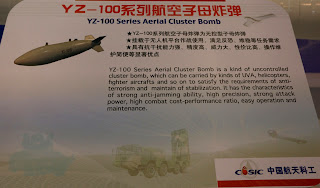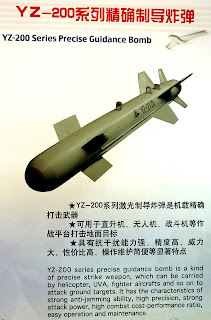Within just two months of being
commissioned, the Liao Ning (pennant no 16)—the PLA
Navy’s (PLAN) first aircraft carrier—on November 25 both received and launched its
first two Shenyang Aircraft Corp-built J-15 combat aircraft (clones of the
Su-33). It was on September 25, 2012 that China had commissioned the Liao Ning,
which will primarily be used for testing purposes but it will also help defend
“the interests of state sovereignty, security and development,” according to the
country’s Ministry of National Defense. China’s then President Hu Jintao and Premier
Wen Jiabao had attended the commissioning ceremony, thereby highlighting the
political importance attached to the 990-feet Soviet-era vessel.
The launch of
the Liao Ning at the Dalian port made China the last of the five-member UN
Security Council to own an aircraft carrier. “The delivery and commission of
the Liao Ning is just a small step of China’s aircraft carrier procurement programme
and there is a long way to go before we have a powerful navy,” the ship’s
Commanding Officer, Rear Admiral Zhang Zheng said. “Today (September 25) will
be forever remembered as the day China’s Navy has entered the era of aircraft
carriers”. The Liao Ning is now being run by highly educated crew, including
female sailors. Half of the commissioned officers on board hold masters or
doctoral degrees, according to Mei Wen, political commissar of the aircraft carrier.
The delivery of an aircraft carrier is not the end of an aircraft carrier
project, especially when the carrier-based aircraft are not delivered. It is
just an important result of a stage in an aircraft carrier project because the
supporting weapons and carrier-based aircraft systems need to be further
tested. It still needs a longer period of time for the aircraft carrier to form
a joint combat effectiveness together with the aircraft carrier battle group
and submarines. Generally speaking, after the aircraft carrier is delivered, it
requires to undergo three preparatory stages in order to attain the status of an operational
platform.
First
stage:
Sea Trials After Delivery: An
aircraft carrier will first enter a series of sea trials lasting 18 months (after
an aircraft carrier is developed for the first time) or 12 months (for
follow-on vessels) after delivery to ensure that both crew and equipment meet
the requirements of performing combat deployment tasks, which include loading
and unloading of goods and materials and equipment, residential checks,
preparation period of going to sea, tests and trial voyages before being sent
back and final contract trials.
Second
stage:
Fine-Tuning. The period of being
sent back to the shipyard after delivery, which normally lasts for several
months, is a typical maintenance stage in the early phase of the whole life-cycle,
aiming to amend the problems in the final tests and troubles found and postponed
to be solved during trial voyages, and also to upgrade the various on-board carrier-based
systems. The shipyard bearing the task after being sent back is similar to the
shipyard of goods and materials and equipment because it is familiar with the
aircraft carrier.
Third stage: Combat Deployment Preparation. The training for preparedness during war is the responsibility of the fleet forces command where the aircraft carrier is in, including the tests of air-defence operation system, anti-submarine warfare system, anti-ship combat system, electronic warfare system, and flying of carrier-based aircraft groups, as well as certification of the crew complement and their operational capacities. During the training period, the crew complement must accept comprehensive training to adapt to the aviation facilities of the aircraft carrier, such as the battle station exercises for dragging, rescuing and refueling, and battle station operational exercises on duty. The training and examination of operating personnel on takeoff and landing of the carrier-based aircraft are also essential. Before the new aircraft carrier enters formal service, the specialised technician personnel must conduct a comprehensive flight-deck inspection, including the distributed architecture, rigidity, strength and conditions of taking off and landing.
The Liao Ning had its weapons suite
installed by April 2011. The suite includes four FL-3000N anti-missile systems
each comprising a 24-missile launcher. The two metre-long FL-3000N missiles
have a maximum range of 9km. Also installed for close-in air defence are twin
nine-barrel variants of the Type 1130 cannon system, plus twin 18-tube
countermeasures dispensers. For ASW defence, twin UDAV-1M 254mm RBU-12000
ten-tube ASW mortar launchers have been installed. Built by Russia’s ‘SPLAV’
Federal State Unitary Enterprise State Research & Production Association,
the KT-153M launcher can fire two types of rounds: a decoy round (111S02) and
an ASW rocket round (111CZG). The former is designed for the hydro-acoustic
decoying, ensuring that an inbound active-homing torpedo is diverted. The
latter is used both in a barrage mode to lay on an inbound torpedo’s trajectory
a drifting mine barrage comprised of several warheads and in a depth-charge
bomb mode.
Also on board is a locally developed Improved Fresnel Lens Optical
Landing System (IFLOLS), which is used to give glidepath information to pilots
in the terminal phase of landing on an aircraft carrier. IFLOLS, uses a
fibre-optic ‘source’ light, projected through lenses to present a sharper,
crisper light. This has enabled pilots to begin to fly ‘the ball’ further away
from the ship, thereby making the transition from instrument flight to visual
flight smoother. Additional improvements include better deck motion
compensation due to internalisation of the mechanism. The Liao Ning on August
10, 2011 left its shipyard at Dalian Port in northeast China’s Liaoning
Province after an eight-year refitting process. As it set sail, the Liaoning
Provincial Maritime Safety Administration publicised a notice restricting
navigation in waters off the Dalian coast, saying that vessels are forbidden
from travelling through an area of sea 13--25 nautical miles wide and 22
nautical miles long in the northern Yellow Sea and Liaodong Bay from August 10
to 14, 2011.
The 323 metre-long Liao Ning will carry
about 18 J-15 ‘flying shark’ heavy multi-role combat aircraft (a cloned version
of the Su-33), about six Z-8K airborne early warning helicopters, and two Z-8K
search-and-rescue helicopters. The vessel will also carry 2,500 tonnes of
aviation fuel, allowing it to generate up to 1,000 aircraft and helicopter
sorties without any replenishment. Crew complement will be 3,000. The J-15,
developed and produced by the No112 Factory of Shenyang Aircraft Corp (SAC),
features enlarged folding wings, strengthened landing gears with twin nose
wheels, a pair of small canard foreplanes, a larger wing area to improve its
low-speed handling, a shortened tail-cone to avoid tail-strike during high AoA
landing, and an arrester hook. The avionics and weapons suites are both of
Chinese origin. At least one Su-33 prototype (T-10K-3) was acquired from
Ukraine in 2001 for airframe reverse-engineering purposes. The first J-15 prototype was
assembled by SAC in 2008 and it made its maiden flight on August 31, 2009, when
it was powered by two Russian AL-31F turbofan engines. The first takeoff from a
land-based simulated ski-jump occurred on May 6, 2010. For lead-in-fighter
training for the PLAN’s aircraft carrier-based naval aviators, the FL-2000/JL-9
flying training aircraft has been modified to incorporate an arrester hook.
A Zinc Chromate primer was applied to the Varyag’s main deck in 2006 at Dalian. This is a primer for a non-skid surface to keep aircraft from skidding off of a carrier’s main deck. In late Arpil, 2009, the Varyag was moved from the pier in Dalian, to a dry dock about two miles distant. In 2009, at the Wuhan Naval Research Institute 711 or China Ship Design Institute, the PLAN embarked on building a full-scale deck and island mock-up of the Varyag. This included the ski-ramp and complete deck markings, the island superstructure and a complete array of sensors were added there. These fittings have been repeated in real-life on the Liao Ning itself as its island was rebuilt. Two full-size mock-up aircraft were also placed on the mock-up deck, one a Z-8 heavylift helicopter, and a strike aircraft that resembled a Su-33. On June 8, 2011 the Chief of General Staff of the PLA confirmed that China’s first aircraft carrier was under construction. On the morning of August 10, 2011 the Liao Ning began her first sea trial.
































































































